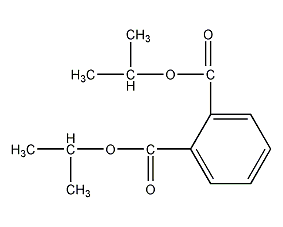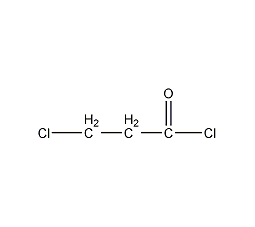

Structural formula
| Business number |
079M |
| Molecular formula |
C6H10 |
| Molecular weight |
82.14 |
| label |
n-Butylacetylene,
n-Butylacetylene,
Butylacetylene,
linear compound
|
Numbering system
CAS number:693-02-7
MDL number:MFCD00009504
EINECS number:211-736-9
RTECS number:MQ9691000
BRN number:635687
PubChem number:24877774
Physical property data
1. Properties: water-white liquid with special smell. [1]
2. Melting point (℃): -132[2]
3. Boiling point (℃): 71.4[3]
4. Relative density (water = 1): 0.72[4]
5. Saturated steam Pressure (kPa): 33.65 (37.7℃)[5]
6. Critical pressure (MPa): 3.62[6]
7. Octanol/water partition coefficient: 2.73[7]
8. Flash point (℃): -21.1[8]
9. Ignition temperature (℃): 268[9]
10. Explosion upper limit (%): 16.6[10]
11. Lower explosion limit (%): 1.1[11]
12. Solubility: insoluble in water, soluble in ethanol and ether , benzene, etc. [12]
13. Gas phase standard combustion heat (enthalpy) (kJ·mol-1): -3912.50
14. Gas phase standard claimed heat (enthalpy) (kJ·mol-1): 122.30
15. Gas phase standard hot melt (J·mol-1·K-1): 128.24
16. Liquid phase standard combustion heat (enthalpy) (kJ·mol-1): -3978.32
17. Liquid phase standard claimed heat (enthalpy) (kJ·mol-1): 88.12
18. Liquid phase standard heat melt (J·mol -1·K-1): 187.0
Toxicological data
1. Acute toxicity[13] LD50: >400mg/kg (mouse subcutaneously); >100mg/kg (mouse Abdominal cavity)
2. Irritation No data yet
Ecological data
1. Ecotoxicity No data available
2. Biodegradability No data available
3 .Non-biodegradability No data yet
4. Other harmful effects[14] This substance May be harmful to the environment, special attention should be paid to water bodies.
Molecular structure data
1. Molar refractive index: 27.67
2. Molar volume (cm3/mol): 111.3
3. Isotonic specific volume (90.2K ): 249.8
4. Surface tension (dyne/cm): 25.3
5. Dielectric constant: 2.39
6. Polarizability: 10.97
Compute chemical data
1. Reference value for hydrophobic parameter calculation (XlogP): 2.4
2. Number of hydrogen bond donors: 0
3. Number of hydrogen bond acceptors: 0
4. Number of rotatable chemical bonds: 2
5. Number of tautomers: none
6. Topological molecule polar surface area 0
7. Number of heavy atoms: 6
8. Table��Charge: 0
9. Complexity: 53.7
10. Number of isotope atoms: 0
11. Determine the number of atomic stereocenters: 0
12. Uncertain number of atomic stereocenters: 0
13. Determined number of chemical bond stereocenters: 0
14. Uncertain number of chemical bond stereocenters :0
15. Number of covalent bond units: 1
Properties and stability
1. Stability[15] Stable
2. Incompatible substances [16] Strong oxidants, alkali metals, alkaline earth metals, heavy metals and heavy metal salts, halogens
3. Conditions to avoid contact[17] Heating and contact with air
4. Polymerization hazard[18] Aggregation
Storage method
Storage Precautions[19] Store in a cool, ventilated warehouse. Keep away from fire and heat sources. The storage temperature should not exceed 37°C. The packaging must be sealed and must not come into contact with air. They should be stored separately from oxidants, acids, metal powders, etc., and avoid mixed storage. Use explosion-proof lighting and ventilation facilities. It is prohibited to use mechanical equipment and tools that are prone to sparks. The storage area should be equipped with emergency release equipment and suitable containment materials.
Synthesis method
1. Preparation method:

In a 5LDeWar bottle equipped with a stirrer, add 3L of liquid ammonia, 0.5g of ferric nitrate, and 5g of metallic sodium to remove surface oxides. After 2 minutes, add 138g (6.0 mol) sodium metal (cut into small pieces) in batches about 30 minutes. After the addition is complete, let it stand until the dark blue reaction mixture turns into light gray (about 20 minutes). Slowly introduce acetylene (2) gas (acetylene comes from an acetylene cylinder, and pass the acetylene gas through two scrubbing bottles containing concentrated sulfuric acid to remove acetone). The reaction is exothermic, and the reaction bottle is cooled with a dry ice-acetone bath. The acetylene gas is passed at a rate of 2 to 3 L per minute until a black liquid is generated, which takes about 4 to 5 hours. Liquid ammonia can be added if necessary during the reaction. Install the pressure balance funnel, add 685g (5.0mol) of butyl bromide dropwise, and finish the addition in about 2 hours. At the same time, continue to feed acetylene gas at a rate of about 500mL per minute. The reaction is exothermic, so be careful to cool it with a dry ice-acetone bath and keep it at about -50°C for the reaction. After the addition is completed, stop passing acetylene, and slowly allow the ammonia to recover and evaporate before adding 60g of ammonium chloride to decompose unreacted sodium amide or sodium acetylene. Add 500g crushed ice, and then add 1.5L distilled water. Steam distillation. The organic layer in the eluate was separated, dried over anhydrous sodium sulfate, fractionated, and the fraction at 71-72°C was collected to obtain 280g of 1-hexyne (1), with a yield of 68%. [21]
Purpose
Used as an intermediate in organic synthesis. [20]










